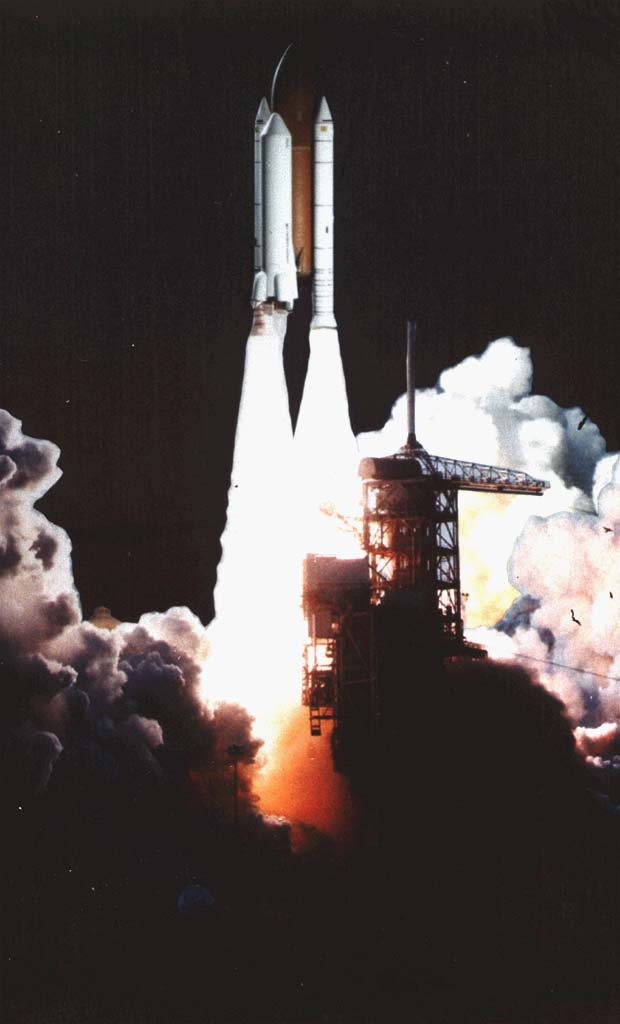Shuttle-C on:
[Wikipedia]
[Google]
[Amazon]
 The Shuttle-C was a study by
The Shuttle-C was a study by
Encyclopedia Astronautica link on the Shuttle-C
{{Reusable launch systems Space Shuttle program Partially reusable space launch vehicles Shuttle-derived space launch vehicles Cancelled space launch vehicles
 The Shuttle-C was a study by
The Shuttle-C was a study by NASA
The National Aeronautics and Space Administration (NASA ) is an independent agencies of the United States government, independent agency of the US federal government responsible for the civil List of government space agencies, space program ...
to turn the Space Shuttle
The Space Shuttle is a retired, partially reusable low Earth orbital spacecraft system operated from 1981 to 2011 by the U.S. National Aeronautics and Space Administration (NASA) as part of the Space Shuttle program. Its official program ...
launch stack into a dedicated uncrewed cargo launcher. The Space Shuttle external tank
The Space Shuttle external tank (ET) was the component of the Space Shuttle launch vehicle that contained the liquid hydrogen fuel and liquid oxygen oxidizer. During lift-off and ascent it supplied the fuel and oxidizer under pressure to the ...
and Space Shuttle Solid Rocket Booster
The Space Shuttle Solid Rocket Booster (SRB) was the first solid-propellant rocket to be used for primary propulsion on a vehicle used for human spaceflight. A pair of these provided 85% of the Space Shuttle's thrust at liftoff and for the first ...
s (SRBs) would be combined with a cargo module to take the place of the Shuttle orbiter and include the main engines. Various Shuttle-C concepts were investigated between 1984 and 1995.
The Shuttle-C concept would theoretically cut development costs for a heavy launch vehicle by re-using technology developed for the shuttle program. End-of-life and Space Shuttle hardware would also have been used. One proposal even involved converting '' Columbia'' or ''Enterprise
Enterprise (or the archaic spelling Enterprize) may refer to:
Business and economics
Brands and enterprises
* Enterprise GP Holdings, an energy holding company
* Enterprise plc, a UK civil engineering and maintenance company
* Enterpris ...
'' into a single-use cargo launcher. Before the loss of Space Shuttle ''Challenger'', NASA had expected about 24 shuttle flights a year. In the aftermath of the ''Challenger'' incident, it became clear that this launch rate was not feasible for a variety of reasons. With the Shuttle-C, it was thought that the lower maintenance and safety requirements for the uncrewed vehicle would allow a higher flight rate.
The Shuttle-C would have been the main crew launch vehicle for the Piloted ILREC Lander in the International Lunar Resources Exploration Program.
In the early 1990s, NASA engineers planning a crewed mission to Mars
Mars is the fourth planet from the Sun and the second-smallest planet in the Solar System, only being larger than Mercury. In the English language, Mars is named for the Roman god of war. Mars is a terrestrial planet with a thin at ...
included a Shuttle-C design to launch six non-reusable, 80-ton segments to create two Mars ships in Earth
Earth is the third planet from the Sun and the only astronomical object known to harbor life. While large volumes of water can be found throughout the Solar System, only Earth sustains liquid surface water. About 71% of Earth's surfa ...
orbit. After President George W. Bush
George Walker Bush (born July 6, 1946) is an American politician who served as the 43rd president of the United States from 2001 to 2009. A member of the Republican Party, Bush family, and son of the 41st president George H. W. Bush, he ...
called for the end of the Space Shuttle by 2010, these proposed configurations were put aside.
See also
* Shuttle SERV * Magnum (rocket) * Shuttle-derived vehicle * Shuttle-Derived Heavy Lift Launch Vehicle, a heavy lift launch vehicle with a similar design. * Energia *List of space launch system designs
Even before the launch of Sputnik 1, there were various types of launch vehicle designs. The launch vehicle designs described below are either canceled or never left the drawing board.
20th century
21st century
See also
*Comparison of or ...
References
External links
Encyclopedia Astronautica link on the Shuttle-C
{{Reusable launch systems Space Shuttle program Partially reusable space launch vehicles Shuttle-derived space launch vehicles Cancelled space launch vehicles